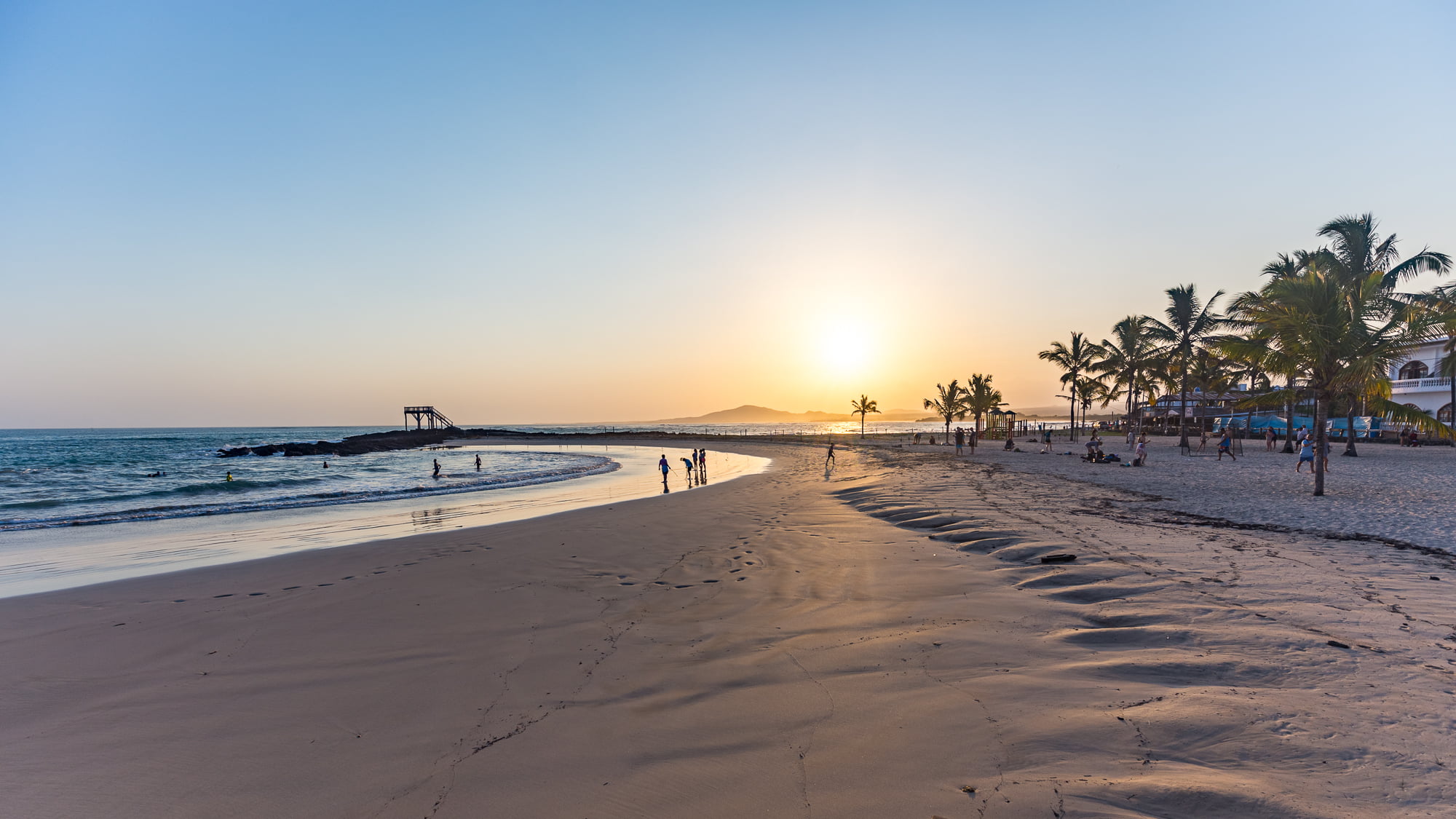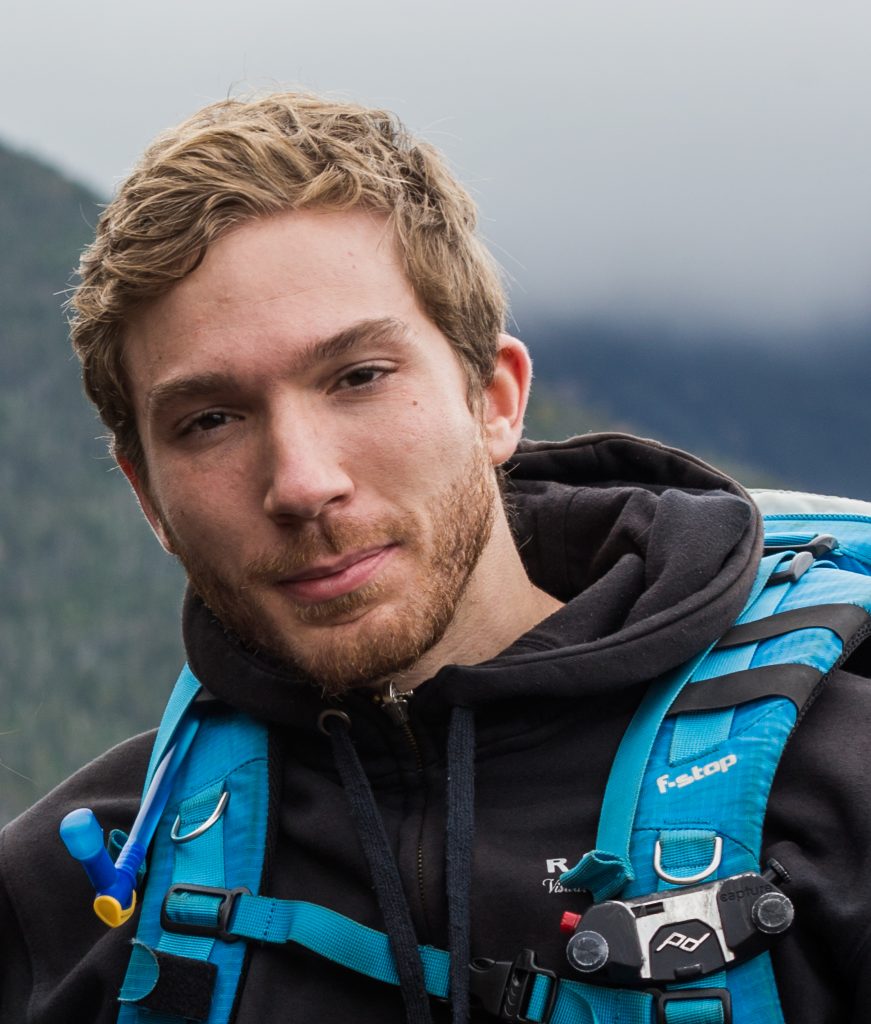Today, as usual, we set off early for a double kayak trip to Las Tintoreras. The aim of this expedition is to see more and more animals, including the famous Galapagos penguins.

Kayaking in Las Tintoreras
Las Tintoreras is a small group of islands very close to Puerto Villamil, about 5 minutes by boat. Part of the Galapagos National Park, these islands are only accessible by kayak or small motorboat (panga) and with a guide.
We chose the kayak option, as it would give us a bit of a workout and we'd heard it was more fun than a panga. We set off directly from the beach where our sea lion friends are resting. Some of them come in from the sea with their funny hopping gait, to settle on the beach in the shade.

From the kayak, we can observe sharks cruising close by. We can also see an array of boobies, very close to us, swooping down from the sky towards their aquatic prey. It's quite an impressive sight.
After about 1 hour, we jump into the water for a snorkelling session. Unfortunately, visibility is pretty poor. We ask the guide if this is normal. He tells us it's due to the current phase of the full moon, influencing the tides and visibility. Nevertheless, we caught a glimpse of a "sting ray" resting on the seabed, and a few other fish. We climbed back into our kayak to continue our exploration.

We approach an area where several marine iguanas are resting. There are several on the volcanic rocks, but also in the water. You can see them swimming, crossing from one shore to the other. They look really funny with their little heads sticking out of the water! You can see them in the photo below.

Our first penguin!
We change places and the guide finds us a solitary little penguin on his rock. He's so tiny and cute!
We can approach the rock to get a better look. However, we have to stay within 5 metres of it, a series of buoys indicating the limit we must not exceed. The guide keeps an eye on us at this point, which is great. The aim is not to disturb them.

The Galapagos penguin is the northernmost and warmest of the penguin species. They are very small, averaging 50 cm in height. The presence of cold currents enables them to live in this environment. The Galapagos penguin's small population and isolation make it vulnerable to climate change. In particular, the meteorological phenomena known as El Niño can devastate populations. Indeed, the warm currents caused by El Niño considerably reduce the number of fish consumed by this penguin, leading to starvation. Tourism, overfishing and the introduction of undesirable species by man also threaten the penguins. For these reasons, the species is officially classified as "endangered".

We were also able to observe various seabirds from our kayak.
We return to port at around 11:30am, with our usual welcome, ladies and gentlemen of the sea lions.
Lunch break
In the afternoon, we take a refreshment break at therestaurante el cafetal"The restaurant is located around the village square. We order 2 fish dishes of the day, an excellent choice. Marie adds an excellent cold mocaccino and Thomas an equally delicious tiramisu. We take advantage of the warm early afternoon sun to stay in the shade of the café.

Right next to the restaurant, the village church has stained glass windows, not religious, but representing the local fauna: marine iguana, penguin, sea lion, etc. Wildlife is everywhere!
Centro de Crianza de Tortugas
At around 3.30pm, as the sun begins to dip a little, we set off on a short walk on a wooden platform, to observe the wildlife of the Villamil lagoon, a marshy area. This trail of just over 1 km begins just past the Iguana Crossing hotel and ends at the giant tortoise breeding center, the Centro de Crianza de Tortugas.

Along the way, we spotted flamingos and several other birds, including American Gallinules (the one with the red spot on its forehead/nose) and American Stilts. We found the stilts particularly beautiful and elegant, their small bodies held on 2 long pink legs.

We also saw other species of unidentified birds. This is one of the disadvantages of doing most of the activities ourselves. We don't have much information on the wildlife we see. On the other hand, we really appreciate the freedom of being able to move at our own pace, taking the time we want. It has to be said that Marie is slower than average when it comes to animals! Thomas can testify to that.
Arriving at the Center, we visit the giant Galapagos tortoise enclosures and learn more about saving this endemic species of the islands. You can visit the center on your own or with a guide. There are several enclosures with juvenile turtles.

These land tortoises, known as Galapago, gave their name to the islands. Their average lifespan is estimated at 150 to 200 years. They can measure up to 2.2 meters in length. They're quite turtles, and seem to come from another, more prehistoric world or era. These turtles have long been hunted by whalers and pirates, who used them as a source of fresh meat in the 18th and 19th centuries.

The introduction by humans of foreign species such as goats has resulted in the destruction of the vegetation that makes up the turtles' diet. Other introduced species (rats, pigs) have also contributed to the threat to the species, by pillaging turtle nests.
The aim of the center is to ensure the species' reproduction and then to reintroduce specimens into the wild, while keeping a close eye on them.

On the way back, we again see our flamingo friends, who have moved closer to the platform. We also spot some curious little crabs known as "fiddler crabs". They measure around 2 cm and have a claw on one side.

After this long walk, we end another fine day with dinner at Encanto De la Pepa, once again. But it's hard to find something good and cheap here, so their daily menu is a sure bet. And what's more, they serve fast.

Then it's back to the hotel for a good night's sleep. It was our last day on Isabela. Tomorrow we get up very early, as we have to take a boat to discover a new island.

For the rest of our adventures, follow our Galapagos Diary:
Day1
Day2
Day3
Day4














